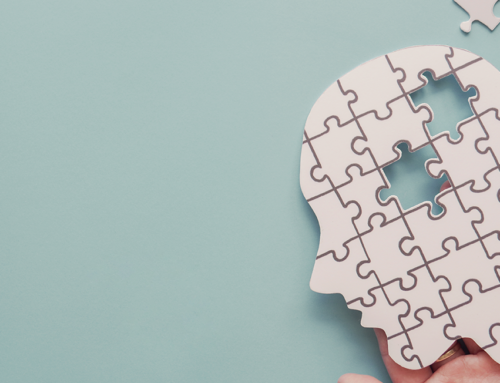CI-therapy with musical elements – a speech therapist’s point of view
The 14th EURO-CIU symposium on April 5, 2024 in Vienna included a presentation by Teresa Schneider, BSc, from LZH Dornbirn in Austria on the value of music exercises in hearing training with adults and children as well as her experiences with the MELUDIA exercise program.

The 14th EURO-CIU symposium on April 5, 2024 in Vienna included a presentation by Teresa Schneider, BSc, from LZH Dornbirn in Austria on the value of music exercises in hearing training with adults and children as well as her experiences with the MELUDIA exercise program.
“Speech melody is the bridge between music and speech,” says Teresa Schneider, BSc. Schneider is the head speech therapist at the regional center for the hearing impaired in Dornbirn. Her presentation at the symposium covered among others her experiences with music in hearing training. She particularly emphasized that musical exercises also help to perceive the suprasegmental level of speech - the so-called speech melody.
Music and musical activities have been an indispensable part of the auditory education of hearing-impaired children for many years. Recently, musical elements have also been increasingly used in adult hearing trainings. Schneider cited numerous scientific studies that show the positive effect of music training on various aspects of hearing, speech development and hearing rehabilitation. Additionally, she knows how music can be used for hearing training regardless of the client's language skills.
Prosody - the music in speech

Theresa Schneider, BSc is head speech therapist at the regional center for the hearing impaired in Dornbirn. ©private
The experienced therapist used various prosodic characteristics to compare the musical exercises of the MELUDIA online program with conventional speech exercises: Perceiving rhythmic beats in music, for example, also makes it possible to better perceive individual syllables in words. Changes in pitch not only characterize the melody of the music, but also the difference between interrogative and declarative sentences. The ability to distinguish pitches helps to differentiate between so-called minimal pairs - words with different meanings that differ from each other in just one sound.
When it comes to social life, it is particularly important to understand speech in a noisy environment. However, this is specifically challenging for people with hearing impairments. This ability can be trained with various methods: Hearing training in highly frequented rooms such as coffee shops. Or auditory training with artificially added background noise - from a technical noise signal to a radio turned up. Musical training also offers the opportunity to practice the differentiation of simultaneous sounds: When the patient is asked to distinguish between different instruments in a piece of music, or when they have to recognize a certain sound from several simultaneous sounds. Or when the patient is asked to follow a single instrument acoustically.
Music as a proven aid for better hearing and understanding

These parallels between music and speech melody are the reason why listening exercises with music not only lead to greater music enjoyment, but also to better speech comprehension.
Music has many other positive effects, and not just for children. Studies show that music promotes social-emotional skills, as well as creativity and the ability to listen. Cognitive skills - especially concentration and auditory memory - are also trained. Musical exercises can sometimes even train fine and gross motor skills. Singing children's songs and making music with simple instruments are popular musical activities in early childhood education, especially for children with hearing or speech impairments.
Recently, musical elements have also been increasingly used in auditory training for young and adult clients. “Practicing with music cannot replace listening exercises on a linguistic level,” explains Teresa Schneider, “but it is a valuable addition.” Partly because music enables language-independent auditory training. The speech therapist from Vorarlberg quotes one of her clients: “The often missing vocabulary due to my poor language knowledge frustrates me during the exercises. With music, other things are important, such as distinguishing between high and low tones. This shows me that despite my limited knowledge of the language, I am already good in many parts of auditory training on a non-verbal level!” The fact that you don't need a training partner to use online music training is an additional advantage for those affected.
MELUDIA, the online music training program
Teresa Schneider, BSc, from LZH Dornbirn, Austria, presented MELUDIA as an online music training program for adults and children and reported on her positive experiences. Free access to the exercises specifically for CI users is available via MyMEDEL.
Other materials for music rehabilitation
In addition to compact programs for music training, there are also numerous information materials on hearing exercises with music. For example, the brochure “Music Rehabilitation for Adult CI Recipients” provides a good overview with instructions for concentrated music listening, music training and musical activities: free download in English, other languages in progress. In addition, “MusicalEars” offers an introduction to musical listening exercises for children with CI and examples of musical activities: In English, free of charge at MyMEDEL in the MED-EL Academy.






